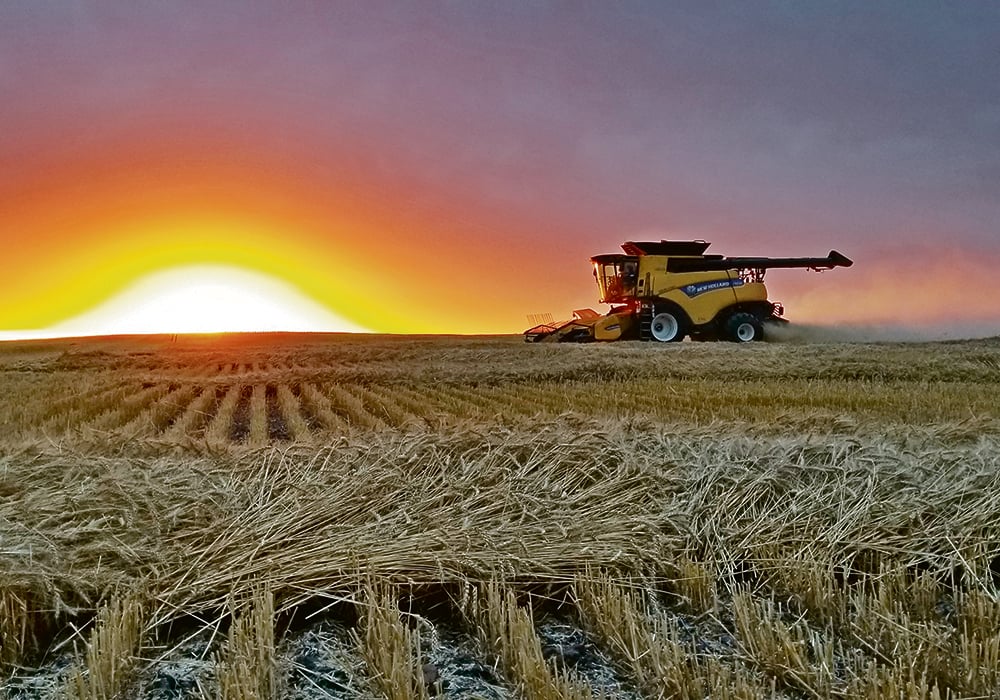Harvest 2020 is almost in the bin, well ahead of three and five-year averages for the prairie provinces.
It’s a welcome change from the previous year that saw farmers struggle with the worst harvest conditions in decades.
“It was pretty well seamless for a lot of people,” said Lynn Jacobson, president of the Alberta Federation of Agriculture. “Even up as far north as Edmonton, they had some more rain, but they never really got stopped for long.”
Jacobson, who farms northeast of Lethbridge near Enchant, Alta., said southern Alberta enjoyed ideal harvest conditions.
Read Also

Farming Smarter receives financial boost from Alberta government for potato research
Farming Smarter near Lethbridge got a boost to its research equipment, thanks to the Alberta government’s increase in funding for research associations.
Further north and into the Peace River country, some farmers struggled with hail and flooding and cool weather that delayed ripening.
Still, according to Alberta Agriculture, about 90 percent of the Alberta harvest was complete as of Oct. 6, with work most advanced in the northeastern and northwestern growing regions of the province. This is well ahead of the five-year average of 68 per cent.
“It’s a bit of a mixed bag, overall,” Jacobson said. “Some of the governments are saying Western Canada has had an exceptional crop all the way across. I’m not quite ready to make that statement.”
Todd Lewis, president of the Agricultural Producers Association of Saskatchewan, had a similar take. While some areas such as the southeast of the province enjoyed exceptional yields, others, like east of Regina, were disappointing. He attributes the spotty performance to crops that had to rely entirely on local rain showers.
“We never really had a big weather system that came across the province and dumped an inch or two of rain right from border to border,” said Lewis, who farms near Gray, southeast of Regina.
“Even on individual farms, it would be better on one side of the farm than the other just because it didn’t catch the same amount of rain.”
Saskatchewan’s crop was almost totally off the fields as of Oct. 12, according to the Ministry of Agriculture, compared to the five-year average of 83 percent for this time of year.
The weather was welcome for most producers, many still hurting from the memories of last year’s cold, wet struggle.
Dry conditions this year allowed farmers to get crops into the bin dry and in good condition, in many cases all in one run with no days or weeks lost to rain.
Further east, Manitoba Agriculture reported 95 percent of the crop was in the bin as of Oct. 13. This is ahead of the three-year average of 79 percent and a far cry from 2019 where record-breaking rain and heavy snowfall kept producers off the fields.
Yields and quality are average to good. For example, yields for canola ranged from 35 to 50 bushels per acre while flax came in at a healthy 35 to 45 bu. per acre.
The early harvest has meant time to get the fall work done, whether it’s moving livestock and putting up feed, carrying out equipment maintenance or field preparations. Lewis said field preparations have been complicated by the conditions. Exceptionally dry soil won’t close up properly when applying anhydrous ammonia fertilizer, and fall-seeded crops may not have enough moisture to germinate. Dry conditions stretch right across the Prairies.
“We’ve used up just about all the excess moisture,” Jacobson said. “There have been no big rains, nothing since July.”
Still, there’s plenty of time for rain and snow before next year’s crop needs to go in the ground, and prairie farmers have also become much better at handling dry conditions. Lewis compares 2020 to the notorious drought year of 1988 and subsequent dust storms of early 1989.
“This year in a lot of ways had very similar conditions and we had pretty close to an average crop,” he said. “It speaks well of how far we’ve come agronomically as far as being able to grow a crop in dry conditions.”

















